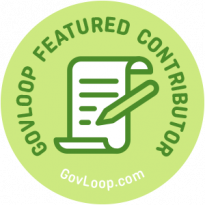Introduction
The 2025 U.S. presidential transition presents a pivotal opportunity to harness artificial intelligence (AI) to enhance the efficiency, transparency, and effectiveness of governmental transitions. By leveraging AI, incoming administrations can navigate the complexities of assuming office more seamlessly, ensuring continuity and informed decision-making from Day One. AI can streamline the transfer of power, reduce administrative bottlenecks, and help new leadership quickly assess priorities while maintaining national security and operational stability.

Streamlining Information Management
The vast expanse of governmental data can be overwhelming during a transition. AI can assist by:
- Data Aggregation: Compiling information from various agencies into coherent summaries, allowing the incoming team to quickly grasp essential details.
- Intelligent Search: Enabling rapid retrieval of pertinent documents, historical data, and policy papers through natural language queries.
- Automated Briefing Creation: AI can generate real-time reports, helping officials get up to speed on crucial policy and national security issues efficiently.
Example: Estonia’s e-government model, which leverages AI to streamline access to official data.
Enhancing Decision-Making With Predictive Analytics
AI-driven predictive analytics can provide insights into potential outcomes of policy decisions by:
- Scenario Simulation: Modeling the effects of proposed policies under various conditions, which aids in strategic planning.
- Risk Assessment: Identifying potential challenges and unintended consequences associated with specific initiatives.
- Public Sentiment Analysis: Assessing real-time social media and news sentiment to help guide policy and messaging decisions.
Example: The UK’s AI-backed analytics in public policy, used to predict outcomes of governmental changes.
Facilitating Effective Communication
Clear communication is vital during transitions. AI can support this by:
- Natural Language Processing (NLP): Assisting in drafting speeches, press releases, and policy briefs that align with the administration’s tone and objectives.
- Sentiment Analysis: Monitoring public and media reactions to announcements, allowing for timely adjustments in messaging.
- Automated Media Monitoring: Tracking how transition policies are being reported and providing data-driven recommendations on messaging strategies.
Example: Singapore’s AI-powered digital governance platforms, which enhance communication with the public.
Managing Appointments and Human Resources
Coordinating personnel changes is a significant task during transitions. AI can streamline this process by:
- Talent Matching: Aligning candidate qualifications with role requirements to identify optimal appointments.
- Onboarding Automation: Providing new appointees with tailored information and resources to accelerate their integration.
- AI-Powered Background Vetting: Enhancing the security and efficiency of vetting processes for key roles.
Example: Canada’s AI-driven hiring solutions in government workforce management.
Ensuring Continuity in National Security
Maintaining national security is paramount. AI can aid by:
- Threat Detection: Analyzing intelligence data to identify emerging threats.
- Resource Allocation: Optimizing the deployment of security assets based on predictive models.
- Automated Crisis Response Simulations: Simulating possible national security threats and providing real-time countermeasure recommendations.
Example: The U.S. Cyber Command’s AI-driven security monitoring and response systems.
Challenges and Considerations
While AI offers numerous benefits, it is essential to address potential challenges:
- Data Privacy: Ensure that sensitive information is handled securely.
- Bias Mitigation: Regularly audit AI systems to prevent and correct biases.
- Transparency: Maintain clear documentation of AI decision-making processes.
Example: The EU AI Act, which focuses on ethical AI use in public administration.
As the 2025 transition unfolds, embracing AI can lead to a more responsive and effective government. By learning from global examples and addressing inherent challenges, the incoming administration can set a precedent for future transitions.
Final Thoughts
AI has the potential to revolutionize presidential transitions, ensuring a seamless transfer of power, improved decision-making, and enhanced security. However, balancing AI-driven automation with ethical considerations, transparency, and public trust will be critical. If properly implemented, AI can create a new standard for efficiency in government transitions, making future shifts in leadership smoother and more effective.
Dr. Rhonda Farrell is a transformation advisor with decades of experience driving impactful change and strategic growth for DoD, IC, Joint, and commercial agencies and organizations. She has a robust background in digital transformation, organizational development, and process improvement, offering a unique perspective that combines technical expertise with a deep understanding of business dynamics. As a strategy and innovation leader, she aligns with CIO, CTO, CDO, CISO, and Chief of Staff initiatives to identify strategic gaps, realign missions, and re-engineer organizations. Based in Baltimore and a proud US Marine Corps veteran, she brings a disciplined, resilient, and mission-focused approach to her work, enabling organizations to pivot and innovate successfully.





Leave a Reply
You must be logged in to post a comment.